সৈয়দা রুবাইয়া নাসরিন, একজন বাংলাদেশি বিজ্ঞানী, বর্তমানে জাপানের কিয়োতো বিশ্ববিদ্যালয়ে গবেষণায় নিযুক্ত। মধ্যবিত্ত পরিবারের মেয়ে সর ছোটবেলার কৌতূহলই তাকে আজকের এই অবস্থানে পৌঁছে দিয়েছে। তার জীবন কেমন করে এক সাধারণ মেয়েকে একটি অসাধারণ সফল বিজ্ঞানীতে পরিণত করল, তা আমাদের সবার জন্যই অনুপ্রেরণার।
ছোটবেলার কৌতূহল এবং শুরুটা:
ঢাকার একটি মধ্যবিত্ত পরিবারে জন্ম নেওয়া সৈয়দা ছোটবেলা থেকেই অন্যরকম ছিলেন। তিন ভাইবোনের মধ্যে দ্বিতীয় সৈয়দা ছোটবেলা থেকেই নতুন কিছু শেখার 1প্রতি অনুরাগী ছিলেন। খেলাধুলার পরিবর্তে ঘরের বিভিন্ন যন্ত্রপাতি খুলে তার ভেতরের রহস্য উদঘাটন করা ছিল তার শখ।
এ ধরনের কৌতূহল থেকেই একসময় তার বিজ্ঞানের প্রতি ভালোবাসা জন্মায়। তবে তার যাত্রাপথ কখনোই মসৃণ ছিল না। বাবা-মা তাকে নিয়ে উচ্চাশা পোষণ করলেও, তারা জানতেন না কীভাবে মেয়ের স্বপ্ন পূরণে সাহায্য করবেন।
সৈয়দা রুবাইয়া নাসরিন তার শিক্ষা জীবনের শুরুতে একজন স্থপতি হওয়ার স্বপ্ন দেখতেন। মাধ্যমিক ও উচ্চ মাধ্যমিকে বিজ্ঞান বিভাগে পড়াশোনা করার সময় এই স্বপ্ন ছিল তার কল্পনার কেন্দ্রবিন্দু। তবে, ২০০৯ সালে তিনি ঢাকা বিশ্ববিদ্যালয়ের রসায়ন বিভাগে ভর্তির সুযোগ পান, যা তার জীবনকে অন্যদিকে নিয়ে যায়।
বাংলাদেশের স্কুল-কলেজ পর্যায়ে পরীক্ষণের সুযোগ থাকলেও, প্রকৃত গবেষণার হাতেখড়ি তার ঢাকা বিশ্ববিদ্যালয়ের রসায়ন বিভাগেই। ব্যাচেলর কোর্সের শেষ বর্ষে দুই ক্রেডিটের প্রজেক্টের মাধ্যমে তিনি Material Chemistry Research Laboratory (MCRL)-এ কাজ করার সুযোগ পান।
এ সময় তিনি Ionic Liquid (আয়নিক লিকুইড) নিয়ে কাজ করতেন। আয়নিক লিকুইড একটি বিশেষ ধরনের পদার্থ, যেখানে প্লাস ও মাইনাস চার্জযুক্ত আয়নগুলো একত্রে থাকলেও এটি তরল অবস্থায় থাকে। তার প্রজেক্টের মূল লক্ষ্য ছিল, আয়নিক লিকুইডে কোনো পোলার তরল পদার্থ (যেমন পানি বা ইথানল) যোগ করার ফলে কী পরিবর্তন ঘটে তা বিশ্লেষণ করা।
তিনি আবিষ্কার করেন যে, শতকরা মাত্র ৫ ভাগ পোলার তরল যোগ করলেই মিশ্রণের বিদ্যুৎ পরিবহন ক্ষমতা কয়েকগুণ বৃদ্ধি পায়। এর পেছনের কার্যকারণ খুঁজে বের করার জন্য তিনি গবেষণাপত্র অধ্যয়ন করতেন, সুপারভাইজার এবং ল্যাবের অন্যান্য সদস্যদের সঙ্গে আলাপ করতেন। এভাবে তিনি আয়নিক লিকুইডের আচরণের সঠিক ব্যাখ্যা দিতে সক্ষম হন।
এই অভিজ্ঞতা তাকে গবেষণার প্রতি আকৃষ্ট করে। তিনি জানান,
“কোনো ঘটনার পেছনের কারণ বের করে আনার বিষয়টা আমাকে খুব আপ্লুত করেছিল এবং এভাবেই আমি গবেষণায় আগ্রহী হয়ে উঠি।”
ব্যাচেলর পর্যায়ের গবেষণার অভিজ্ঞতা তাকে বিভিন্ন কনফারেন্সে অংশগ্রহণ করার সুযোগ দেয়। মাস্টার্সে পড়াকালীন তিনি দেশের বিভিন্ন বিশ্ববিদ্যালয়ে প্রেজেন্টেশন দেন, যা তার আত্মবিশ্বাস বাড়িয়ে তোলে।
এই ধারাবাহিকতার অংশ হিসেবে, ২০১৬ সালে তিনি MEXT স্কলারশিপ অর্জন করেন এবং সম্পূর্ণ বিনা খরচে জাপানের হোক্কাইডো বিশ্ববিদ্যালয়ে পিএইচডি করার সুযোগ পান। পিএইচডি করার সময় তিনি জাপানের বিভিন্ন শহর এবং ইউরোপের বিভিন্ন দেশে প্রেজেন্টেশন দেওয়ার সুযোগ পান। এই অভিজ্ঞতা তাকে গবেষণার প্রতি আরও নিবেদিত করে তোলে।
তার মতে,
“শিল্পীরা যেমন সৃষ্টিশীলতায় সমাজকে মুগ্ধ করেন, গবেষকরাও তাদের সৃষ্টিশীল মানসিকতা দিয়ে জটিল ঘটনার পেছনের কারণ উদঘাটন করতে পারেন।”
মাইক্রোটিউবিউলস: কোষের ক্ষুদ্র জগৎ:
সৈয়দা রুবাইয়া নাসরিনের গবেষণার কেন্দ্রবিন্দু হলো আমাদের শরীরের কোষের ভেতরের এক অতি ক্ষুদ্র জগৎ—মাইক্রোটিউবিউল। এটি মূলত সিলিন্ডার আকৃতির প্রোটিন পলিমার, যার পুরুত্ব মানুষের চুলের এক লক্ষ ভাগেরও কম। এটি জীবকোষের ভেতরের কঙ্কালের মতো কাজ করে, যা কোষের কাঠামো বজায় রাখতে এবং গুরুত্বপূর্ণ উপাদান পরিবহনে সাহায্য করে।
মাইক্রোটিউবিউল এবং মোটর প্রোটিনের কার্যক্রম:
মস্তিষ্কের নিউরন কোষগুলোর ভেতরে মাইক্রোটিউবিউল রাস্তা বা রেললাইনের মতো ভূমিকা পালন করে। এই রাস্তায় কাইনেসিন এবং ডায়নিন নামের মোটর প্রোটিন চলাচল করে। এদের কাজ হলো কোষের এক প্রান্ত থেকে আরেক প্রান্তে বিভিন্ন প্রয়োজনীয় উপাদান যেমন—আরএনএ, এনজাইম, বা কোষের অন্যান্য অঙ্গাণু পরিবহন করা। রুবাইয়ার গবেষণার মূল লক্ষ্য ছিল, পারিপার্শ্বিক প্রতিক্রিয়া যেমন চাপ বা শক্তি প্রয়োগের ফলে মাইক্রোটিউবিউলের কাঠামোগত পরিবর্তন এবং এর ফলে এই মোটর প্রোটিনের কার্যক্রমে কী ধরনের প্রভাব পড়ে তা খুঁজে বের করা।
একটি সহজ উদাহরণে ব্যাখ্যা
সৈয়দা রুবাইয়া তাঁর গবেষণাকে একটি মালগাড়ি এবং রেললাইনের সাথে তুলনা করেন। যদি রেললাইনের কাঠামোতে ত্রুটি থাকে, তাহলে মালগাড়ির চলাচল বাধাগ্রস্ত হয়। একইভাবে, মাইক্রোটিউবিউল যদি ক্ষতিগ্রস্ত হয়, তাহলে কোষের ভেতরে মোটর প্রোটিনের কার্যক্রম ব্যাহত হয়। এই গবেষণা আমাদের বুঝতে সাহায্য করে কেন কোষের ভেতরের রাস্তার মতো এই কাঠামোগুলি সুস্থ ও কার্যকর থাকা এত গুরুত্বপূর্ণ।
গবেষণার প্রভাব:
মাইক্রোটিউবিউল এবং মোটর প্রোটিনের এই মিথস্ক্রিয়া বোঝা স্নায়বিক রোগ, যেমন—আলঝেইমার, পারকিনসন এবং ক্যান্সারের মতো জটিল রোগ নির্ণয় ও প্রতিকারে গুরুত্বপূর্ণ ভূমিকা রাখতে পারে। রুবাইয়া মনে করেন, মাইক্রোটিউবিউলের কাঠামোগত পরিবর্তনগুলিকে লক্ষ্য করে নতুন ওষুধ ডিজাইন করা যেতে পারে। এছাড়াও, প্রকৌশলীরা কোষের কাজ থেকে অনুপ্রাণিত হয়ে শরীরের নির্দিষ্ট অংশে ওষুধ সরবরাহ করার মতো প্রযুক্তি তৈরি করতে পারেন।
সৈয়দা রুবাইয়ার গবেষণা শুধু রোগ নির্ণয় নয়, বরং ভবিষ্যতের জন্য নতুন প্রযুক্তি উদ্ভাবনে সহায়ক হতে পারে। কোষের ভেতরের এই ক্ষুদ্র জগৎ সম্পর্কে গভীরতর বোঝাপড়া আমাদের স্বাস্থ্যসেবায় নতুন দিগন্ত উন্মোচন করতে পারে।
সংগ্রাম এবং সফলতা: এক বিজ্ঞানীর পথচলা:
সৈয়দা রুবাইয়া নাসরিনের জন্য বিজ্ঞানী হয়ে ওঠার পথ মোটেও সহজ ছিল না। ঢাকা বিশ্ববিদ্যালয়ে পড়াশোনার সময় গবেষণার বিষয় বুঝতে এবং নিজের ধারণাগুলো পরিষ্কার করতে তাকে প্রচুর পরিশ্রম করতে হয়েছে। যখন তিনি উচ্চশিক্ষার জন্য জাপানে যান, তখন একা থাকার মানসিক চাপ এবং ভাষাগত প্রতিবন্ধকতা ছিল তার জীবনের বড় চ্যালেঞ্জগুলোর মধ্যে অন্যতম।
তবে, প্রতিটি ব্যর্থতাকে তিনি দেখেছেন শিখার একটি ধাপ হিসেবে। তার মতে:
“ব্যর্থতা মানে পথচলার শেষ নয়। বরং এটি নতুন করে শুরু করার একটি সুযোগ।”
এই মনোভাবই তাকে এগিয়ে যেতে অনুপ্রাণিত করেছে এবং তাকে বর্তমান অবস্থানে পৌঁছাতে সহায়ক হয়েছে।
বাংলাদেশি শিক্ষার্থীদের জন্য বার্তা: সাফল্যের দিশা
সৈয়দা মনে করেন, একজন বিজ্ঞানী হওয়ার জন্য বড় ল্যাব বা উন্নত সরঞ্জামের প্রয়োজন নেই। বরং, নিজস্ব কৌতূহল, অধ্যবসায় এবং আত্মবিশ্বাসই বিজ্ঞানচর্চার প্রধান শক্তি।
তিনি তরুণ শিক্ষার্থীদের জন্য কিছু গুরুত্বপূর্ণ পরামর্শ দিয়েছেন:
1️⃣ মূল বিষয়গুলোর ভিত মজবুত করো: গণিত, পদার্থবিজ্ঞান, রসায়ন এবং জীববিজ্ঞান—এই বিষয়গুলোতে দক্ষতা অর্জন করো।
2️⃣ প্রোগ্রামিং এবং ডেটা অ্যানালাইসিস শিখো: আধুনিক গবেষণার জন্য এই দক্ষতাগুলো অপরিহার্য।
3️⃣ স্বপ্ন দেখো এবং প্রশ্ন করো: প্রতিটি বিষয়ের পেছনের রহস্য উদঘাটন করার তাগিদ থাকতে হবে।
সৈয়দা বলেন,
“তোমার চারপাশের প্রতিটি জিনিসেই বিজ্ঞান লুকিয়ে আছে। কেবল সেই রহস্য খুঁজে বের করার ইচ্ছা থাকতে হবে।”
ভবিষ্যৎ পরিকল্পনা: বিজ্ঞানকে মানুষের সঙ্গে যুক্ত করা:
সৈয়দার স্বপ্ন হলো তার গবেষণার মাধ্যমে মানুষের জীবনকে আরও উন্নত করা। তিনি চান, বাংলাদেশি শিক্ষার্থীরা তার কাজ থেকে অনুপ্রাণিত হয়ে গবেষণার প্রতি আরও বেশি আগ্রহী হবে। তার বিশ্বাস, সঠিক দিকনির্দেশনা পেলে বাংলাদেশ থেকে আরও অনেক মেধাবী বিজ্ঞানী বিশ্বে নিজেদের অবস্থান তৈরি করতে পারবে।
উপসংহার: কৌতূহল আর অধ্যবসায়ের শক্তি:
সৈয়দা রুবাইয়া নাসরিনের জীবন আমাদের শেখায়, কৌতূহল এবং অধ্যবসায়ের শক্তি দিয়ে কিভাবে অসম্ভবকেও সম্ভব করা যায়। তার গবেষণা চিকিৎসা বিজ্ঞানের সীমানা ছাড়িয়ে প্রযুক্তি এবং উদ্ভাবনের নতুন পথ উন্মোচন করেছে।
“যদি প্রশ্ন করতে শেখো এবং চেষ্টা চালিয়ে যাও, তবে কোনো বাধাই তোমাকে থামাতে পারবে না।”
সৈয়দার এই অদম্য ইচ্ছাশক্তি এবং সাফল্যের গল্প আমাদের জন্য অনুপ্রেরণার এক আলোকবর্তিকা।
সৈয়দা রুবাইয়া নাসরিনের সাথে যোগাযোগ করুন:
সৈয়দার সঙ্গে সরাসরি যোগাযোগ করতে পারেন লিংকডইন বা অন্যান্য প্ল্যাটফর্মের মাধ্যমে। তার গবেষণাকর্ম ও চিন্তাধারা জানতে দেখুন:
🔗 লিংকডইন: Syeda Rubaiya Nasrin
📚 রিসার্চগেট: Syeda Rubaiya Nasrin
❓ কোরা: Syeda Rubaiya Nasrin
📄 এক্স (পূর্বে টুইটার): @RubaiyaNasrin
Syeda Rubaiya Nasrin: The Journey of Curiosity to Scientific Excellence:
Syeda Rubaiya Nasrin, a Bangladeshi scientist currently pursuing her research at Kyoto University in Japan, epitomizes how innate curiosity can evolve into groundbreaking scientific achievements. Her journey, from a middle-class family in Dhaka to becoming a globally recognized researcher, is nothing short of inspirational.
A Childhood of Curiosity:
Growing up in a middle-class family in Dhaka, Syeda was always intrigued by the mechanics of her surroundings. While her peers indulged in sports, she spent her afternoons dismantling household items to understand their inner workings.
This natural inquisitiveness planted the seeds for her love of science, but her path was not without challenges. Though her parents nurtured high hopes for her, they were unsure how to guide her toward her dreams.
Syeda initially envisioned herself as an architect while studying science in high school. However, her journey took a pivotal turn in 2009 when she was accepted into the Department of Chemistry at the University of Dhaka.
Laying the Foundation: The University of Dhaka:
Despite limited experimental opportunities at school, Syeda’s true initiation into research began at the University of Dhaka. During her undergraduate studies, she joined the Material Chemistry Research Laboratory (MCRL) as part of her final-year project.
Her research focused on Ionic Liquids—unique substances where charged ions remain in a liquid state instead of forming a solid structure. Syeda explored how adding polar liquids like water or ethanol impacted the overall properties of ionic liquids.
She discovered that adding just 5% of a polar liquid could exponentially increase electrical conductivity. To explain these findings, she delved into research papers, engaged in discussions with her supervisor, and collaborated with lab members. This hands-on experience solidified her passion for uncovering the mechanisms behind scientific phenomena.
As she recounts:
“The process of unraveling the reasons behind an occurrence captivated me and fueled my passion for research.”
Her undergraduate research also allowed her to present her findings at various conferences. During her master’s studies, she expanded her horizons, delivering presentations at universities across Bangladesh.
Her dedication earned her the prestigious MEXT Scholarship in 2016, enabling her to pursue a Ph.D. at Hokkaido University in Japan. This phase of her journey opened new doors, allowing her to present her research across Japan and Europe, further cementing her commitment to scientific discovery.
Microtubules: Exploring the Tiny Worlds Within Cells:
Syeda’s research focuses on microtubules, the skeletal framework inside cells. These cylindrical protein polymers are thinner than one-hundred-thousandth of human hair and play a crucial role in maintaining cellular structure and transporting vital components.
In neurons, microtubules act as highways for motor proteins like kinesin and dynein, which carry essential cargo such as RNA, enzymes, and organelles from one end of the cell to the other.
Syeda’s research investigates how external forces like compression or stretching impact the structure of microtubules and, in turn, the efficiency of these motor proteins.
She explains her work through a relatable analogy:
“Imagine a cargo train traveling on a damaged track—it hinders the train’s movement and delivery of goods. Similarly, damaged microtubules disrupt motor protein functions, affecting cellular processes.”
The Impact of Her Research:
Syeda’s studies hold profound implications for understanding diseases like Alzheimer’s, Parkinson’s, and cancer, all of which can stem from structural anomalies in microtubules. Her findings could guide the development of drugs targeting these structural changes to improve treatment outcomes.
Moreover, her work inspires engineers to design microscopic machines capable of delivering drugs directly to specific parts of the body, drawing inspiration from the cellular transport systems she studies.
Through her research, Syeda aims to open new frontiers in healthcare and technological innovation, providing deeper insights into the inner workings of cells.
Struggles and Triumphs:
Syeda’s journey to becoming a scientist was fraught with challenges. During her time at the University of Dhaka, she struggled to grasp the complexities of research. Later, living alone in Japan and overcoming language barriers added to her hurdles.
Yet, she embraced every failure as a stepping stone. As she puts it:
“Failure doesn’t mean the end of the road. Instead, it’s an opportunity to start anew.”
Message to Bangladeshi Students: A Blueprint for Success!
Syeda believes that cutting-edge laboratories and advanced equipment are not prerequisites for becoming a successful scientist. Instead, curiosity, perseverance, and self-confidence are the most vital tools.
She offers the following advice to aspiring students:
1️⃣ Build a Strong Foundation: Master subjects like mathematics, physics, chemistry, and biology.
2️⃣ Learn Programming and Data Analysis: These skills are essential for modern research.
3️⃣ Dream Big and Question Everything: Always be curious and seek the “why” behind phenomena.
Syeda reminds students:
“Science is hidden in everything around you. All you need is the drive to uncover its mysteries.”
Future Goals: Bridging Science and Humanity:
Syeda dreams of making science more accessible and impactful for society. She hopes her work will inspire Bangladeshi students to pursue research and contribute to global scientific progress.
Conclusion: Curiosity and Perseverance as Catalysts for Change:
Syeda Rubaiya Nasrin’s journey teaches us that curiosity and perseverance can turn challenges into opportunities. Her groundbreaking research extends beyond medicine, influencing technology and innovation.
“If you learn to ask questions and persist in your efforts, no obstacle can hold you back,” she asserts.
Syeda’s story is a beacon of inspiration, proving that the spirit of discovery can drive meaningful change in the world.
Connect with Syeda Rubaiya Nasrin:
If you’d like to get in touch with Syeda, feel free to reach out to her on LinkedIn or explore her research and insights through her other profiles:
🔗 LinkedIn: Syeda Rubaiya Nasrin
📚 ResearchGate: Syeda Rubaiya Nasrin
❓ Quora: Syeda Rubaiya Nasrin
📄 X (formerly Twitter): @RubaiyaNasrin
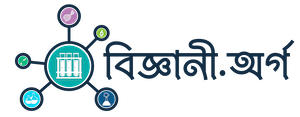
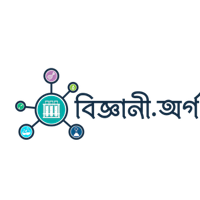
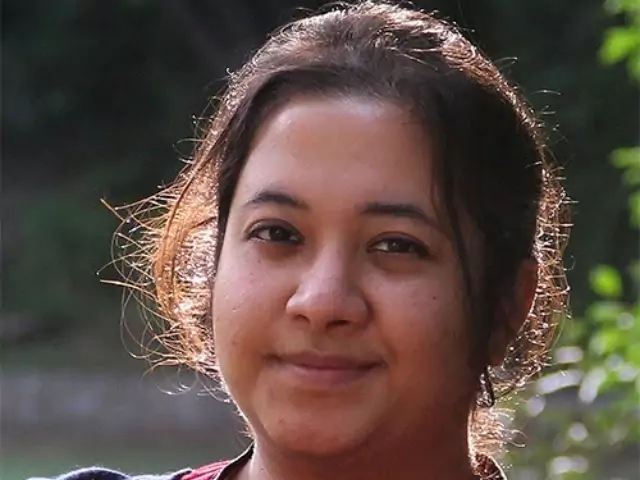




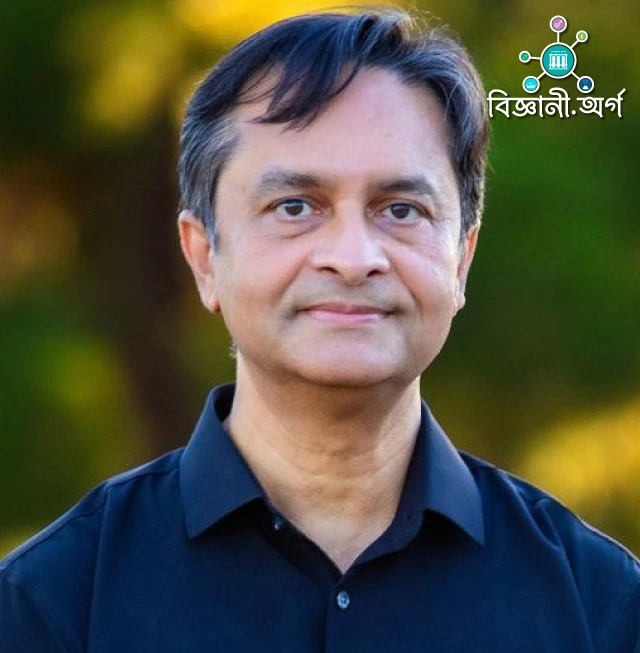
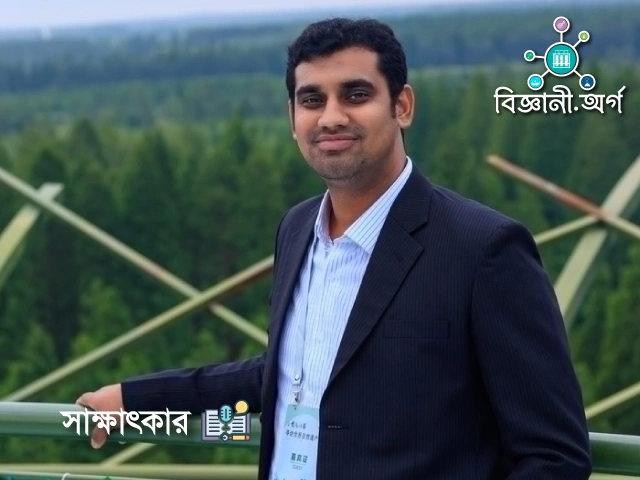
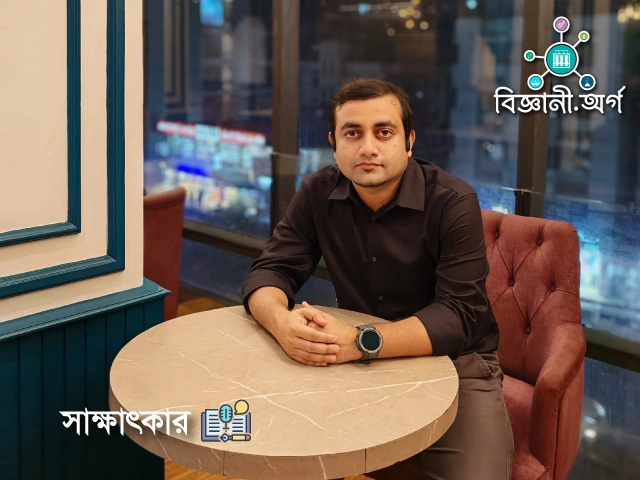

Leave a comment